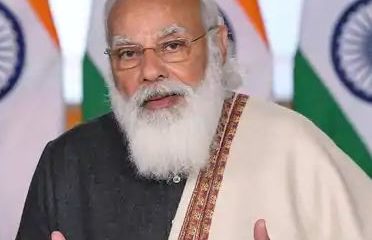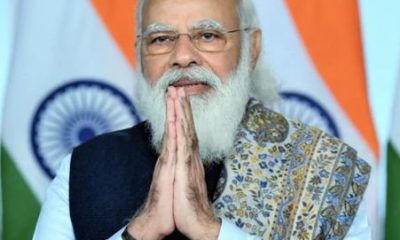Top News
India, Asean reconnect through ancient cultural linkages

New Delhi: In a major fillip to India’s Act East policy, India and the Asean countries are to delve into their ancient socio-cultural linkages through centuries and research and document the findings as part of closer partnership between the two sides, officials said on Thursday.
The move is part of the suggestions of the Asean-India Eminent Persons Group 2010, and something that Prime Minister Narendra Modi stressed on, said Anil Wadhwa, secretary (east) in the external affairs ministry here.
Addressing an international conference on Asean-India Cultural Links, Historical and Contemporary Dimensions, Wadhwa said that Modi during his visit to Myanmar last November had stressed that more should be done to make the younger generation of both sides more aware of their cultural linkages.
He said the Indian government is actively involved in efforts to protect and preserve the cultural links that show the earliest contacts.
“Political security and economic cooperation must go hand in hand with the socio-cultural connection and people-to-people linkages,” he said.
Citing examples, he said that excavations have found evidence of Indian links in the first century AD in Myanmar in the city of Beikthano, also known as City of Vishnu. Coins, statues of Hindu deities, and statues of the Buddha have been found.
In central Thailand, evidence of Indian influence is found through Dvaravati form of representing the Buddha, in the 2nd century AD, which is derived from Indian Amaravati and Gupta styles, which were integrated with local art.
In Cham, in southern Vietnam, there is evidence of extensive influence of Indian culture, through many ancient Shiva temples.
Evidence has been found of extensive trade with the Southeast Asian countries from the Gupta dynasty in the 4th-6th century AD. Tamralipti, an ancient Indian city in the Bay of Bengal, was a busy centre of maritime trade, with ships travelling to the Malay peninsula, the Nicobar islands and to the Strait of Malacca.
Trade with the Asean is an important aspect of India’s links with the region, and India is its fourth largest trading partner, he said.
Emperor Ashoka also sent his Buddhist emissaries who took with them their literary and cultural influences, which were localized, recreated and diffused, with a lot of it coming back to India in the new form, said Wadhwa.
“Cultural and intellectual exchanges and people-to-people links are an important part of India-Asean links. Exchange of artists, intellectuals, researchers and farmers and people are part of this,” he said.
“India and Asean are at the threshold of substantive and reinvented relations, and both are to give action to the Plan of Action for 2016-31, setting new goals to move the strategic partnership forward,” he said.
The third pillar of ties, the socio-cultural aspect, is being brought to the forefront, he added.
He said papers of the two-day conference would be published and shared with both sides.
He said the conference is the first step in the journey to establish research partnerships between their universities on the historical and cultural links.
“Another conference will be held in Jakarta to take the initiative forward,” he added at the conference organized by the Asean-India Centre, the Research and Information System for Developing Countries (RIS) and the ministry of external affairs.
RIS chairperson and former foreign secretary Shyam Saran said: “Very rarely does culture figure in how we think of bilateral relations, but the strongest linkages are always between the people, that binds the emotions and sentiments together.”
He said through the centuries many of the aspects of culture that India would have lost are still alive in some part of Southeast Asia.
He said the effort is to “look at the past to search for answers we face today”.
RIS director general Sachin Chaturvedi said the conference is a step at closer integration with the 10-member Asean and to bring out the shared legacy in the fields of archaeology culture, literature.
The conference was also addressed by Indian Council for Cultural Relations president Lokesh Chandra.
Entertainment
Casino Days Reveal Internal Data on Most Popular Smartphones

International online casino Casino Days has published a report sharing their internal data on what types and brands of devices are used to play on the platform by users from the South Asian region.
Such aggregate data analyses allow the operator to optimise their website for the brands and models of devices people are actually using.
The insights gained through the research also help Casino Days tailor their services based on the better understanding of their clients and their needs.
Desktops and Tablets Lose the Battle vs Mobile
The primary data samples analysed by Casino Days reveal that mobile connections dominate the market in South Asia and are responsible for a whopping 96.6% of gaming sessions, while computers and tablets have negligible shares of 2.9% and 0.5% respectively.
The authors of the study point out that historically, playing online casino was exclusively done on computers, and attribute thе major shift to mobile that has unfolded over time to the wide spread of cheaper smartphones and mobile data plans in South Asia.
“Some of the reasons behind this massive difference in device type are affordability, technical advantages, as well as cheaper and more obtainable internet plans for mobiles than those for computers,” the researchers comment.
Xiaomi and Vivo Outperform Samsung, Apple Way Down in Rankings
Chinese brands Xiaomi and Vivo were used by 21.9% and 20.79% of Casino Days players from South Asia respectively, and together with the positioned in third place with a 18.1% share South Korean brand Samsung dominate the market among real money gamers in the region.
Cupertino, California-based Apple is way down in seventh with a user share of just 2.29%, overshadowed by Chinese brands Realme (11.43%), OPPO (11.23%), and OnePlus (4.07%).
Huawei is at the very bottom of the chart with a tiny share just below the single percent mark, trailing behind mobile devices by Motorola, Google, and Infinix.
The data on actual phone usage provided by Casino Days, even though limited to the gaming parts of the population of South Asia, paints a different picture from global statistics on smartphone shipments by vendors.
Apple and Samsung have been sharing the worldwide lead for over a decade, while current regional leader Xiaomi secured their third position globally just a couple of years ago.
Striking Android Dominance among South Asian Real Money Gaming Communities
The shifted market share patterns of the world’s top smartphone brands in South Asia observed by the Casino Days research paper reveal a striking dominance of Android devices at the expense of iOS-powered phones.
On the global level, Android enjoys a comfortable lead with a sizable 68.79% share which grows to nearly 79% when we look at the whole continent of Asia. The data on South Asian real money gaming communities suggests that Android’s dominance grows even higher and is north of the 90% mark.
Among the major factors behind these figures, the authors of the study point to the relative affordability of and greater availability of Android devices in the region, especially when manufactured locally in countries like India and Vietnam.
“And, with influencers and tech reviews putting emphasis on Android devices, the choice of mobile phone brand and OS becomes easy; Android has a much wider range of products and caters to the Asian online casino market in ways that Apple can’t due to technical limitations,” the researchers add.
The far better integration achieved by Google Pay compared to its counterpart Apple Pay has also played a crucial role in shaping the existing smartphone market trends.
Content provided by Adverloom























